Inhaling Hydrogen Peroxide through a Humidifier

Inhaling hydrogen peroxide (H2O2) vaporized through a humidifier is neither effective against germs nor safe for respiratory health. Hydrogen peroxide, when diluted and vaporized in this manner, loses most of its chemical potency and can cause damage to lung tissue if inhaled over time. Despite some anecdotal claims of benefits, extensive evidence advises against this practice due to health risks.
1. Why Vaporized Hydrogen Peroxide is Ineffective Against Germs
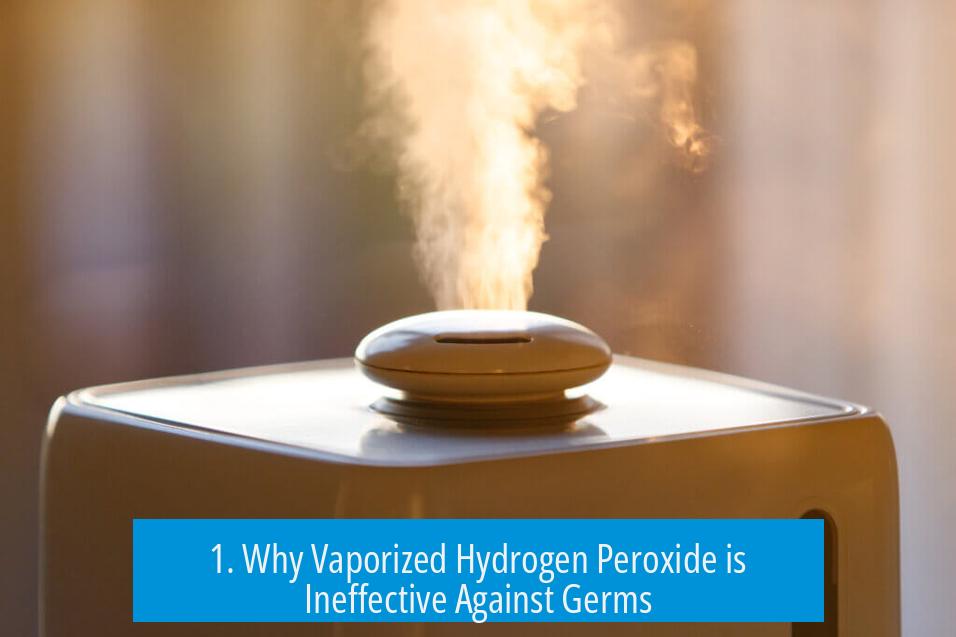
Hydrogen peroxide is known as a disinfectant applied to surfaces and wounds due to its oxidizing properties. However, vaporizing H2O2 through a humidifier does not replicate these conditions in the respiratory tract or environment. Several factors limit any germicidal effect:
- Commercial solutions contain only about 1-3% hydrogen peroxide, already highly diluted in water.
- Pouring hydrogen peroxide into a humidifier further dilutes it in the reservoir.
- The vapor pressure of hydrogen peroxide at room temperature (about 5 Torr at 30°C) causes rapid condensation on surfaces instead of sustained airborne presence.
- Hydrogen peroxide rapidly decomposes into water and oxygen, especially in the presence of metal ions, making it unstable in humidifier reservoirs.
Thus, vaporizing hydrogen peroxide through a humidifier does not achieve airborne concentrations sufficient to inactivate airborne pathogens.
2. Safety Concerns and Risks of Inhaling Vaporized Hydrogen Peroxide
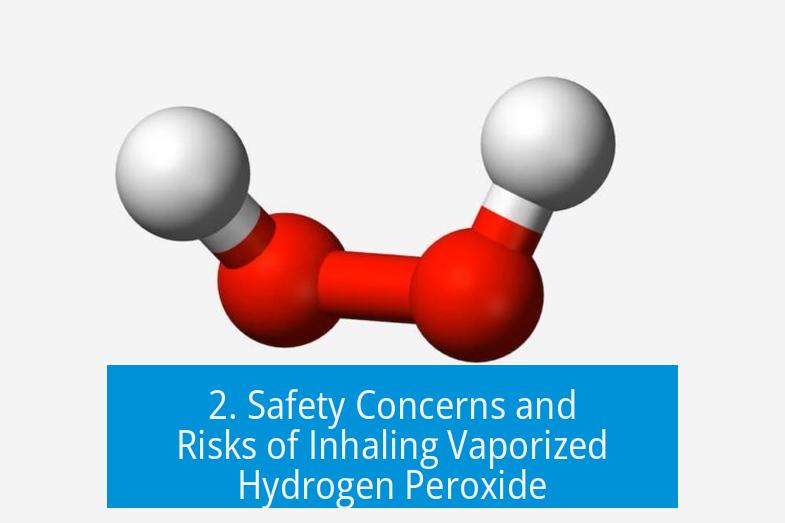
2.1 Dilution, Decomposition, and Exposure Limits
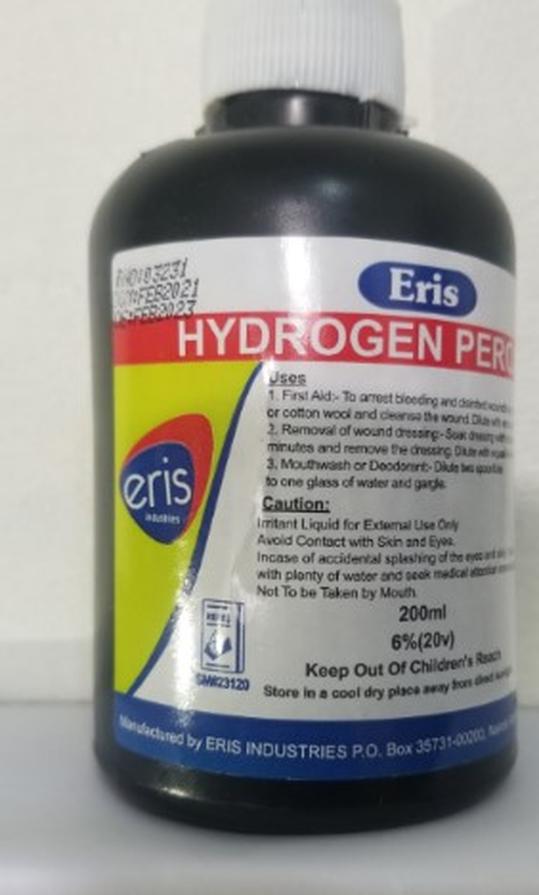
Despite the low initial concentration, inhaling hydrogen peroxide vapor may exceed safe limits if not sufficiently diluted. The Occupational Safety and Health Administration (OSHA) and National Institute for Occupational Safety and Health (NIOSH) recommend exposure limits for H2O2 in air of 1 part per million (ppm). Vaporizing a 3% solution directly poses a risk of exceeding this threshold around the breathing zone.
Hydrogen peroxide in the vapor phase acts as a potent oxidizer. Inhalation oxidizes delicate lung tissue, potentially causing irritation, inflammation, or long-term respiratory conditions with repeated or chronic exposure.
2.2 Personal Experiences of Toxicity
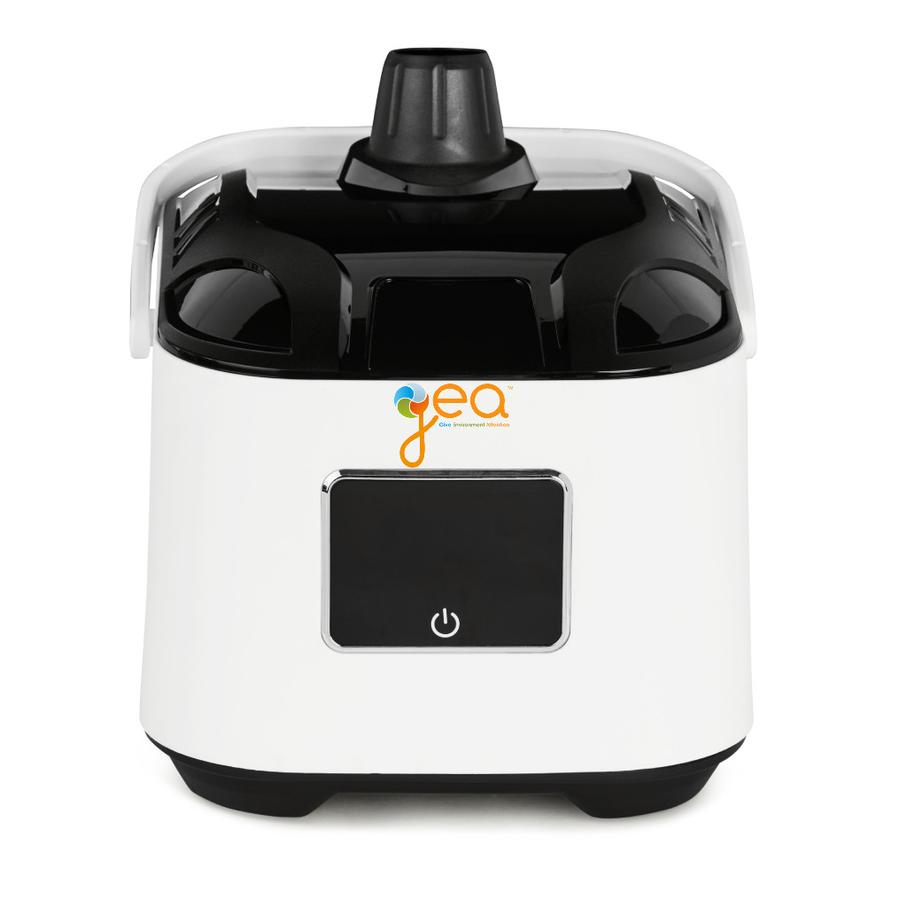
Individuals who have inhaled vaporized hydrogen peroxide report symptoms such as burning eyes, sore throat, runny nose, chest pain, and breathing difficulties. These effects demonstrate the irritant quality of inhaled hydrogen peroxide vapor, even at low concentrations.
One reported case described ongoing respiratory distress after using hydrogen peroxide in a humidifier for several days, with symptoms abating only after cessation of exposure. These clinical observations align with known oxidative damage to mucous membranes and lung tissue.
2.3 Safe Use for Cleaning Only

Hydrogen peroxide is effective for cleaning and disinfecting humidifiers. Adding about one tablespoon of 3% H2O2 weekly to the reservoir helps prevent mold and bacterial growth inside the device. Such dilute solutions degrade within 30 minutes, ensuring minimal inhalation risk.
However, this cleaning use differs sharply from continuous inhalation of vaporized hydrogen peroxide. The tiny residual concentrations during cleaning are unlikely to pose risks, but intentional inhalation is hazardous.
3. Misunderstandings and Proper Preventive Measures Against Respiratory Germs
The idea of inhaling hydrogen peroxide to protect against respiratory infections stems from misconceptions about pathogen transmission and germicidal activity in the air. Respiratory tract pathogens mainly spread through droplets and contact, which cannot be effectively blocked or neutralized by vaporized disinfectants in home environments.
Experts recommend focusing on proven preventive measures for respiratory diseases instead of using unverified chemical inhalants:
- Receive seasonal flu vaccinations.
- Wash hands thoroughly for at least 20 seconds before eating or after restroom use.
- Maintain good overall health through proper sleep, hydration, nutrition, and exercise.
- Avoid prolonged exposure to visibly sick individuals.
- Practice respiratory hygiene by covering coughs and sneezes.
- Seek medical testing for persistent sore throats or other symptoms.
4. Opinions, Anecdotes, and Conflicting Reports
Despite warnings from experts, some individuals share anecdotal accounts of positive results after inhaling diluted hydrogen peroxide. These reports often involve small, ultrasonic cool mist humidifiers and emphasize improved breathing or oxygenation. However, such claims lack robust scientific support and ignore potential risks.
Some people have consumed food-grade hydrogen peroxide or inhaled it based on unverified claims. This practice is dangerous and strongly discouraged by medical authorities due to hydrogen peroxide’s strong oxidizing and corrosive properties.
Occasionally, authors cite controversial studies, such as a Johns Hopkins publication, suggesting hydrogen peroxide vaporizers might be effective in infection control. These studies typically focus on controlled environments, such as hospital disinfection protocols. These controlled applications differ fundamentally from casual inhalation of vapor at home and cannot validate safety or effectiveness for personal respiratory use.
5. Chemical Behavior and Humidifier Use Recommendations
Hydrogen peroxide is chemically unstable, especially in the presence of metals, light, or heat. In a humidifier with a metal reservoir or tap water containing metal ions, H2O2 decomposes rapidly into water and oxygen. This degradation reduces vapor concentration and potential toxicity but also nullifies germicidal efficacy.
For these reasons, humidifiers are recommended to operate with distilled water only. Users adding hydrogen peroxide risk device damage or ineffective operation.
To prevent microbial contamination inside humidifiers without health risks, alternatives like adding sea salt or following manufacturer cleaning instructions are preferable. Hydrogen peroxide is suitable only for periodic cleaning, not for continuous vapor release.
6. Summary of Key Points
- Hydrogen peroxide vaporized through a humidifier lacks effective germicidal activity in air.
- Human inhalation of hydrogen peroxide vapor risks respiratory irritation and lung tissue oxidation.
- Occupational exposure limits recommend a maximum of 1 ppm H2O2 in air.
- Household hydrogen peroxide is already dilute and further diluted in humidifiers, but vapor inhalation still may exceed safe levels.
- Hydrogen peroxide is effective for cleaning humidifiers but not for inhalation-based treatments.
- Proper disease prevention includes vaccination, hygiene, and health maintenance, not chemical inhalants.
- Reported positive personal experiences lack scientific rigor and ignore potential health hazards.
References and Further Reading
- PMC Article on Hydrogen Peroxide Effects
- Review of Inhalation Risks of Chemical Agents
- Johns Hopkins Study on H2O2 Vapor for Infection Control
Inhaling Hydrogen Peroxide Through a Humidifier: What You Should Really Know
Short answer: Inhaling hydrogen peroxide (H2O2) vaporized through a humidifier is not an effective way to kill germs and can actually be harmful to your lungs. But hey, let’s take a closer look because the idea of ‘spraying’ your way to cleanliness sounds tempting, right? Spoiler: it’s mostly a myth with some serious caveats.
Hydrogen peroxide is often praised for its disinfectant powers around the house. Yet, when it comes to inhaling it through a humidifier, things get sticky, or rather sizzly, and not in a good way.
Why Doesn’t Vaporized Hydrogen Peroxide Kill Germs in the Air?
At first glance, it sounds logical — if hydrogen peroxide kills germs on surfaces, why not breathe it in to clean your lungs or the air around you? Unfortunately, that’s NOT how it works.
Hydrogen peroxide’s germicidal properties occur when it contacts microbes directly, typically in liquid form. Vaporizing it through a humidifier dilutes it drastically. You start with a dilute ~1-3% hydrogen peroxide solution. Then it’s poured into your humidifier where it’s diluted again in water. Finally, the vaporized particles quickly condense and settle on surfaces before you can inhale a significant amount. Because H2O2 decomposes rapidly, especially near metal ions (like those in tap water or metallic humidifier parts), the actual concentration in the air is negligible.
In short, vaporized H2O2 just doesn’t hang around in the air long enough, nor at the right strength, to kill airborne germs effectively.
Is It Safe to Inhale Vaporized Hydrogen Peroxide?
The short painful truth: it’s not exactly safe. The recommended exposure limit for hydrogen peroxide in the air is 1 part per million (ppm). Vaporizing even a 3% solution directly risks exceeding that limit. That’s a red flag because hydrogen peroxide is a super strong oxidizer.
Imagine your lungs as delicate tissues that hate being oxidized — exposure to H2O2 vapor can irritate your respiratory tract and cause symptoms like burning eyes, runny nose, chest pain, and trouble breathing. One user shared a grim story of unknowingly inhaling vapor from their hydrogen peroxide-infused cooling mattress pad water. They suffered these symptoms for days before connecting the dots.
So, while a hint of vaporized peroxide probably won’t blow your lungs out immediately, chronic or intense exposure could cause real harm. Oxidizing lung tissue? Definitely a “bad idea” from any respectable medical standpoint.
Using Hydrogen Peroxide for Humidifier Maintenance: A Better Idea
If your goal is disinfection, here’s a more practical tip: adding a small amount of 3% hydrogen peroxide—think a tablespoon per week—to the humidifier tank can help keep mold and bacteria at bay. Since this dilute peroxide breaks down within 30 minutes, it doesn’t vaporize into the air at harmful levels. It just keeps the water reservoir cleaner, making maintenance easier.
Many humidifier fans swear by it to avoid gross, moldy reservoirs. It’s a smart cleaning hack rather than an inhalation therapy. Note though, you should use distilled water, as tap water’s minerals can neutralize the peroxide and damage your device.
Why Do Some People Still Recommend Inhaling Hydrogen Peroxide?
There’s a smorgasbord of “alternative health” claims floating around. Some people even report anecdotal health improvements from inhaling diluted, food-grade hydrogen peroxide. One person claimed better breathing and normal blood oxygen levels after six weeks of doing so with an ultrasonic humidifier. Impressive if true, but these are purely personal accounts, not backed by rigorous science.
On the flip side, some “woo-woo” advice has pushed people to put high concentration (like 12%) hydrogen peroxide into humidifiers. That’s extremely risky and definitely not recommended.
Scientists and public health officials warn: the idea probably stems from misunderstandings about how respiratory diseases spread. You can’t prevent catching germs by trying to sterilize the air with peroxide vapor. Instead, you should focus on proven strategies for reducing disease transmission.
Proven Preventive Tips That Don’t Involve H2O2 Vapor
- Get vaccinated against the flu before flu season starts.
- Wash your hands thoroughly and frequently (20 seconds minimum).
- Maintain good sleep, hydration, nutrition, and exercise habits.
- Avoid close contact with sick people.
- Cover your mouth and nose when you cough or sneeze.
- Work from home if you feel sick.
- If you have a sore throat without other symptoms, get a strep test.
These are the keys that science supports, not vaporizing chemicals in your bedroom.
What About Scientific Studies Supporting Hydrogen Peroxide Vapor?
Curiously, a 2013 study cited by Johns Hopkins discussed the use of hydrogen peroxide vaporizers for disinfecting surfaces and medical equipment. The study showed effectiveness against multi-drug-resistant bacteria, but note the key word: surfaces. This research does not endorse breathing peroxide vapor. The mechanism works in controlled environments where vapor concentration and exposure time are regulated—not a bedroom humidifier.
A quick glance at PubMed also reveals papers on the antimicrobial properties of hydrogen peroxide, but none promote inhalation as a safe or effective treatment.
Final Thoughts: Should You Vaporize Hydrogen Peroxide?
Sure, it sounds cool to “clean the air” by inhaling vaporized peroxide. But reality bites—your lungs won’t thank you. Here’s a quick practical takeaway:
- Do not vaporize hydrogen peroxide to disinfect your indoor air or as a health remedy.
- Use low-concentration H2O2 for cleaning your humidifier reservoir—but rinse well.
- Stick with safe, proven methods to protect yourself from respiratory illnesses.
Still curious? If you want to experiment, consider starting with salt or distilled water alone as humidifier additives. They’re safer and won’t irritate your respiratory system.
In the end, inhaling hydrogen peroxide through a humidifier is a risky idea with no strong evidence of benefit. It won’t reliably disinfect the air, and it can cause lung irritation. Stick to safer cleaning methods and focus on behaviors known to reduce disease risk. Your lungs are tougher than you think, but they aren’t invincible. Oxidizing them? Just a bad idea.
“If inhaling H2O2 would prevent sickness, we’d all be walking around with peroxide breath and spotless lungs by now.”
Let’s keep the peroxide in the cleaning bottle, not the air you breathe.
For the scientifically inclined, take a peek here for more on peroxide’s medical uses and limitations:
Is inhaling hydrogen peroxide vapor through a humidifier effective for killing germs?
Hydrogen peroxide vaporized in a humidifier does not kill germs. It simply does not work that way. The vapor does not have germicidal effects when dispersed in the air by a humidifier.
Can inhaling hydrogen peroxide vapor cause health problems?
Yes, inhaling vaporized hydrogen peroxide can irritate the eyes, throat, and lungs. Prolonged exposure may lead to respiratory issues. Symptoms can include burning sensations, chest pain, and difficulty breathing.
Is it safe to add hydrogen peroxide to a humidifier for cleaning purposes?
Adding a small amount of diluted hydrogen peroxide (around 3%) to a humidifier can help clean mold and bacteria in the machine. The peroxide breaks down quickly and is unlikely to be breathed in at harmful levels in this case.
Why do some people recommend inhaling hydrogen peroxide vapor despite the risks?
This practice is often based on misunderstanding respiratory disease transmission. There is no scientific proof that inhaling hydrogen peroxide prevents illness, and safer health measures exist.
What are safer alternatives to using hydrogen peroxide vapor for respiratory health?
- Get flu shots and vaccines.
- Practice good hand hygiene.
- Maintain adequate sleep, hydration, and nutrition.
- Avoid close contact with sick individuals.
- Cover coughs and sneezes properly.


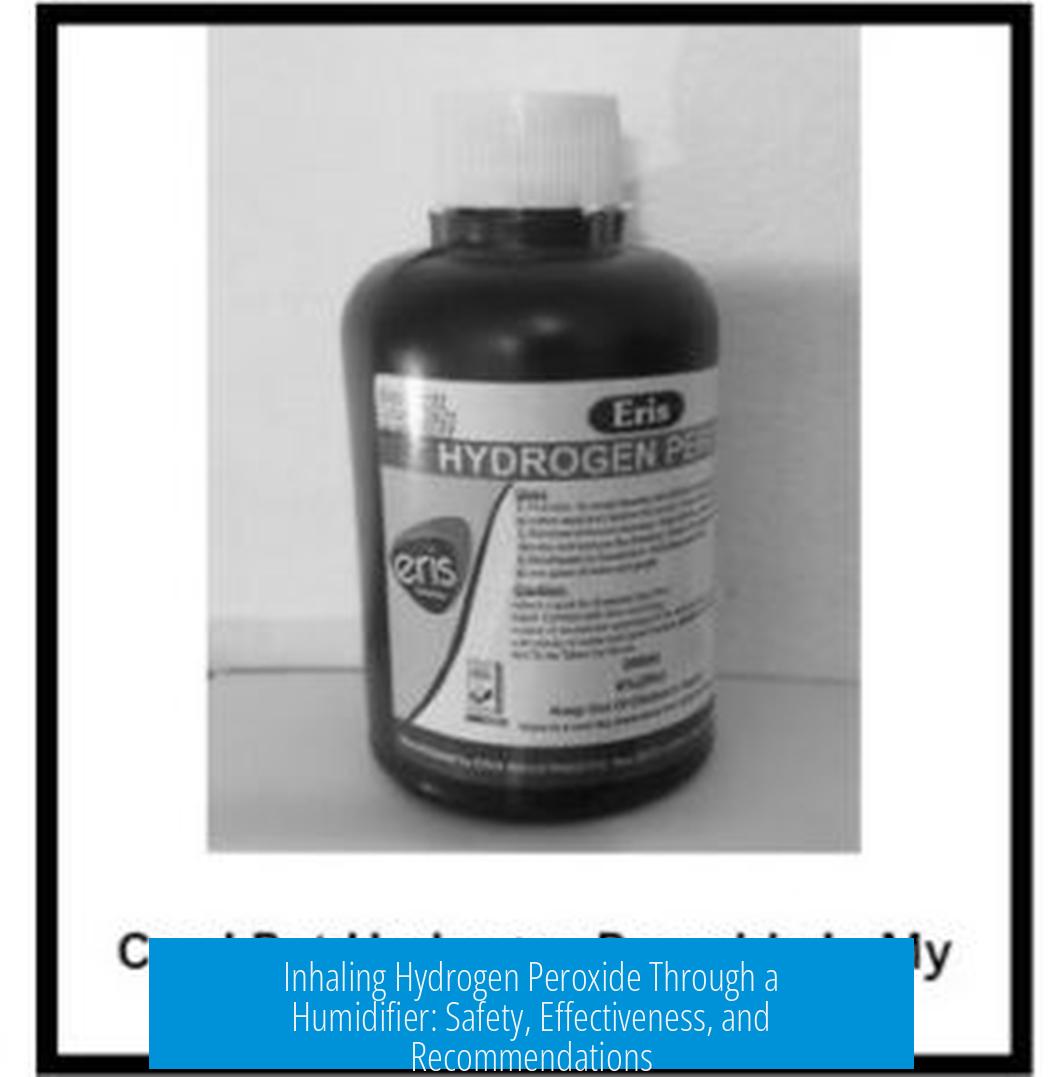
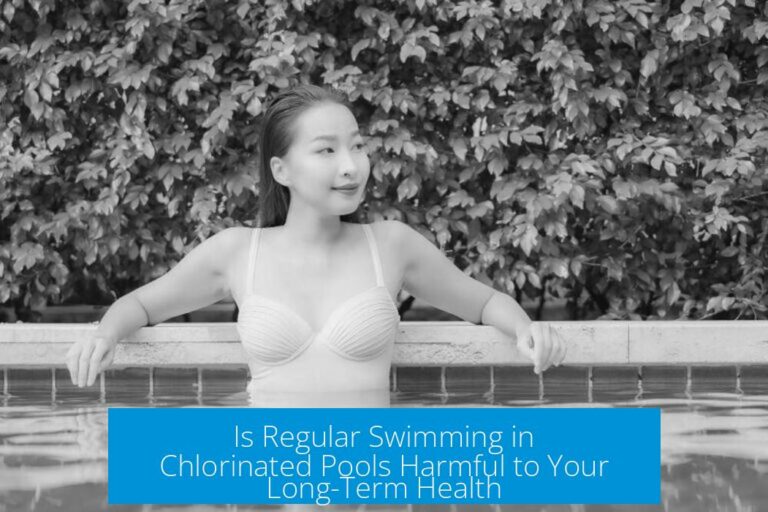

Leave a Comment